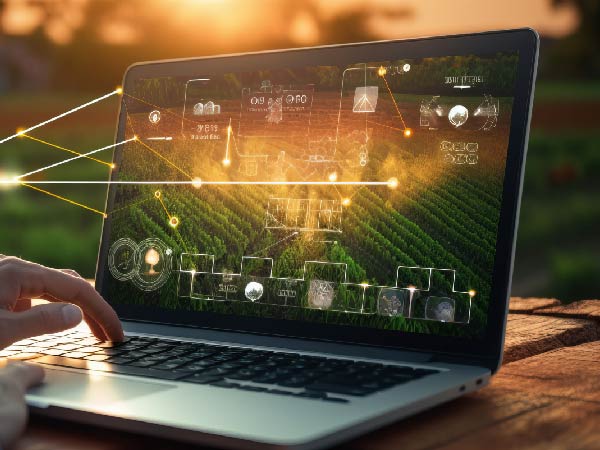At Gen10, we don’t often talk about “ags and softs” as we think it’s important to treat each commodity individually and respect the nuances between each product. Nuances that lead to very different trading processes and therefore different CTRM system requirements.
However, today we are taking an overarching view of the ags and softs landscape. The similarities between agricultural commodities do lend themselves to SaaS CTRM systems, but more importantly, the differences between them are what make a SaaS CTRM so vital in ags and softs.
What is a SaaS CTRM?
SaaS stands for Software as a Service. A SaaS CTRM is a CTRM or Commodity Management System that is maintained by the software vendor in the Cloud rather than by the client (on-premise) and is accessed by end users through a web browser. Many modern business applications are SaaS solutions, including Microsoft Office 365, many CRM systems, and most popular BI tools. Your favourite streaming services are other examples of SaaS systems.
SaaS systems are often faster to implement as they do not need to be installed on your machines, and often require less of an upfront investment as they use a subscription model that lets you grow and shrink the number of users you are paying for as your business needs change. This means that SaaS CTRM systems are often a more realistic option for smaller trading firms getting started with CTRM than older on-premise systems. They are also easier for those already using a CTRM to switch to than used to be the case when on-premise solutions were the only option.
The benefits of SaaS CTRM Systems
These faster implementations are made possible by the software being hosted in the Cloud. This means that rather than sitting on servers in your office or your provider’s office, the system is hosted on a large, often global network. This usually means better reliability and faster connections to your system, as well as access to the latest technology and security.
Cloud-hosted SaaS CTRM systems are also both secure and accessible for your end users as they can access them from any device and any location as long as they have an Internet connection. There is no need to connect to a VPN or remote on to an office-based machine.
And as well as faster implementations, SaaS CTRM systems frequently provide faster development and deployment too. The reason for this is that, as well as usually being more modern and flexible systems, updates can be made just once and pushed out automatically to all system users at every client. There is no need for clients to receive an individual update or for end users to install anything new. This means that developers are free to work on continuous system developments rather than spending their time on deploying updates.
This faster rate of development also means that SaaS CTRM systems are more flexible. Faster development means new features are quicker to arrive, and can often be developed in stages to ensure they fully meet clients’ needs, rather than being released as one big, final update. And as well as the scalability to change the number of licences mentioned above, SaaS systems often include the flexibility to add further modules or apps as your business requirements change.
Because all clients are using the same system, a good SaaS CTRM should also be highly configurable so that you can adapt the system to your own requirements yourself, without the need for lots of expensive and time-consuming development. It is this configurability for specific commodities that usually makes us at Gen10 avoid referring to “ags and softs CTRM”.
Why SaaS CTRM matters in ags and softs
System configurability is incredibly important within ags and softs as many traders will be managing multiple products, or even harvests for the same commodity with very different processes and workflows. As an example, this article explores some of the different processes that can occur just within cotton, and why your CTRM needs to be able to handle and automate all of them.
This configurability is also important as your business expands, whether into new commodities, or through opening up new markets. It means that you can quickly add workflows to automate your new processes within your current CTRM system so that your team can get off the ground quicker and are fully supported by the CTRM, not needing to rely on offline processes or workarounds.
Adapting processes is particularly important for agricultural and soft commodities right now as traders are facing strong and growing demand for more sustainable and traceable commodities. The need for traceability comes from both satisfying consumer demand and from a growing list of traceability legislation that traders need to comply with. And because traceability is such a changeable landscape that cannot be predicted more than a few years out, ags and softs traders need to future-proof their systems and their business by ensuring they will be able to adapt as new certifications and new legislation come into force.
And the other major feature of SaaS CTRM systems that is so vital for agricultural commodities is their ability to connect and integrate with other systems. We have already discussed how CTRM providers themselves often have additional apps that can extend the system’s functionality for specific requirements, but the best CTRM systems will also integrate with the other systems you use to run your business.
This includes your ERP and accounting system, but also external partners, such as vessel tracking companies for comprehensive resource planning and laboratories or inspection companies so that quality data can be updated quickly and simply, without any need to manually update multiple records, or the risk of errors that this introduces.
Ags and softs traders need a SaaS CTRM
There are many reasons why SaaS CTRM systems are an advantage to any commodity trader or merchant, from their broad benefits of reliability, flexibility and speed to the features that make them particularly powerful for organisations managing multiple crops or commodities. And as traceability becomes more important and commodity trading more complex, a flexible, adaptable CTRM system is going to become ever more essential.
If your current CTRM is not providing these benefits, it could be holding your business back. Talk to us today to find out how our commodity-specific customisations and powerful SaaS CTRM could support your unique business processes.



